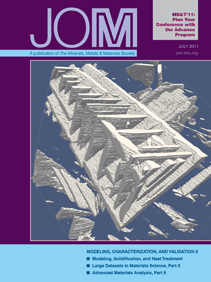 |
TMS ONLINE | TMS PUBLICATIONS | SITE MAP JOM Material Matters Articles in Full-Text Format: October 2005 |
Exploring traditional, innovative, and revolutionary issues in the minerals, metals, and materials fields. |
|||||
| OUR LATEST ISSUE | |||||
VISIT THE JOM COVER GALLERY
|
How to Customize and Maximize Federal Trademark ProtectionArnold B. SilvermanMuch like the tailoring of an article of clothing to fit the user, a plan for protecting a trademark must take into consideration many factors and must be customized to the needs and commercial objectives of the owner. Trademark protection in the United States exists at several levels. First, the use of a mark as a source identifier for goods or services creates certain rights under the common law without requiring registration. A mark may also be registered under state trademark statutes. While common-law rights generally exist only to the extent of geographic use with a reasonable zone of expansion, state trademark registrations generally create a presumption of ownership and the exclusive right to use the mark within the entire state. Federal registration gives one the presumption of ownership and the exclusive right to use the mark throughout the United States. Depending on the initial use of the mark and growth of use, with a given mark one may have common-law rights, state registration rights, and federal registration rights. In all categories, it gives the right to keep a third party from making unauthorized use which creates a “likelihood of confusion.” Traditionally, in the United States, technical trademark use of a mark has been initiated with respect to the associated goods and services before an application to register the mark federally could be filed. Upon obtaining acceptance of the application by the U.S. Patent and Trademark Office, the mark is published for opposition, giving others who feel they have a legitimate basis for opposing the registration an opportunity to make their case. If no successful opposition is initiated, the mark becomes registered. Upon issuance of the registration, it is presumed to be valid and the registrant is presumed to own the mark and have the exclusive right to use the mark in commerce with respect to the goods or services recited in the registration. In addition, the filing of the application is deemed to be constructive use of the mark, conferring a right of priority nationwide in connection with the mark as applied to the goods and services subject to certain exceptions. Examples of exceptions are the right of an innocent prior user (i.e., an innocent user who has initiated use prior to the registrant’s filing or who has filed an application to register the mark that is pending or that became registered prior to such filing, or with respect to certain rights of priority based on a foreign-filed application). An important alternate approach to obtaining registration in the United States resulted from a statutory amendment, effective in 1989, permitting an applicant to file a federal application to register a mark based upon a bona fide intention to use the mark in commerce. One of the key benefits of filing an intent-to-use application is that it affords an early filing date, rather than awaiting actual technical trademark use of the mark. The intent to-use application, once it matures into a registration, will also be entitled to the benefit of the constructive use provision with the effective priority date relating back to the filing date. The procedure, rights, and handling of an intent-to-use application are essentially the same as for an application based on actual use prior to filing, with one exception. An intent-to-use application cannot mature into a registration until an accepted amendment to show use or statement of use is filed in the U.S. Patent and Trademark Office. Assuming that the application is otherwise entitled to acceptance and no amendment to show use has been filed, the mark will be published for opposition. If it successfully passes the opposition period, the Patent and Trademark Office will issue a Notice of Allowance, which requires that a statement of use be filed within six months. In the event that the mark has not been used within that period, extensions of time in six-month increments may be obtained upon a request filed during the next six-month period. A statement of use must be filed within 36 months from the date of publication. Also to be considered in evaluating the federal options is that, when the United States had only the option of use of a mark in commerce before filing a federal application, it became accepted practice to make a good-faith token shipment of goods bearing the mark in interstate commerce to serve as a basis for filing an application. Once intent-to-use applications were permitted, an application based on actual use or an amendment to show use or statement of use must be based on actual use on a commercial scale, rather than a token use. It will be appreciated, therefore, that in establishing a program for protecting a trademark, not only the common law and state options must be considered. Within the federal system, the options of filing based upon actual technical use of the mark in commerce, if it exists, or filing an intent-to-use application rather than awaiting actual use in commerce, also must be considered. Arnold B. Silverman is chair of the Intellectual Property department and a member of Eckert Seamans Cherin & Mellott, LLC in Pittsburgh, Pennsylvania. |
Copyright © 2005 by The Minerals, Metals & Materials Society.
Direct questions about this or any other JOM page to jom@tms.org.
